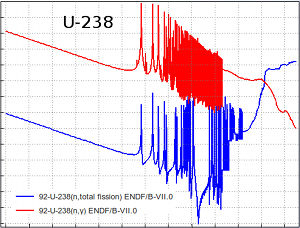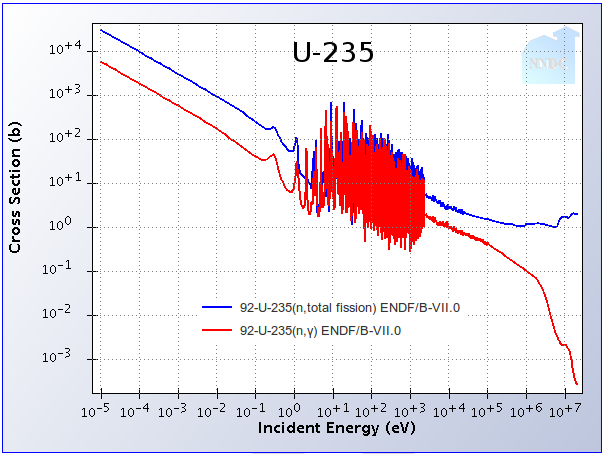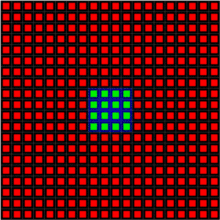Fast neutron reactors - this is the hope of mankind!
 In previous articles - we found out that neither solar energy can satisfy the needs of mankind (due to the rapid failure of batteries and their cost), nor thermonuclear (because even after achieving a positive energy output in experimental reactors - a fantastic amount remains problems in the way of commercial use). What remains?
In previous articles - we found out that neither solar energy can satisfy the needs of mankind (due to the rapid failure of batteries and their cost), nor thermonuclear (because even after achieving a positive energy output in experimental reactors - a fantastic amount remains problems in the way of commercial use). What remains? Not for the first hundred years, despite the whole progress of mankind, the bulk of the electricity comes from the banal burning of coal (which is still the source of energy for 40.7% of the generating capacity in the world), gas (21.2%), oil products (5.5%) and hydropower (another 16.2%, all in all - 83.5% according to 2008 data ).
All that remains is nuclear power, with conventional thermal neutron reactors (requiring the rare and expensive U-235) and fast neutron reactors (which can process natural U-238 and thorium in a “closed fuel cycle”).
What is this mythical “closed fuel cycle”, what are the differences between fast and thermal neutron reactors, what designs exist, when we can expect happiness from all this, and of course - the safety issue is under the cut.
About neutrons and uranium
We were all told at school that U-235 when a neutron enters it - shares with the release of energy, and another 2-3 neutrons fly out. In reality, of course, everything is somewhat more complicated, and this process is highly dependent on the energy of this initial neutron. Let's look at the graphs of the cross section (= probability) of the neutron capture reaction (U-238 + n -> U-239 and U-235 + n -> U-236), and the fission reactions for U-235 and U-238 depending on the energy (= velocity) neutrons:

As you can see, the probability of neutron capture with fission for U-235 - increases with decreasing neutron energy, because in ordinary nuclear reactors neutrons “slow down” in graphite / water to such an extent that their speed becomes the same order as the rate of thermal vibration of atoms in the crystal lattice (hence the name - thermal neutrons). And the probability of fission of U-238 by thermal neutrons is 10 million times less than U-235, and therefore it is necessary to process natural uranium in tons to pick U-235.
Someone looking at the bottom graph may say: Oh, great idea! And let 10MeV neutrons fry a cheap U-238 - the chain reaction should turn out, because there just the cross section graph for fission goes up! But there is a problem - the neutrons released as a result of the reaction have an energy of only 2 MeV or less (on average ~ 1.25), and this is not enough to start a self-sustaining fast neutron reaction in U-238 (either more energy is needed, or more neutrons are needed flew out from each division). Oh, mankind was not lucky in this universe ...
However, if the self-sustaining fast neutron reaction in U-238 were so simple, there would be natural nuclear reactors, as it was with U-235 at Oklo , and accordingly U-238 in nature in the form of large deposits would not occur.
Finally, if you abandon the "self-sustainability" of the reaction, it is still possible to share U-238 directly with energy. This is for example used in thermonuclear bombs - neutrons with an energy of 14.1 MeV from the D + T reaction divide U-238 in the shell of the bomb - and thus you can increase the explosion power almost for free. Under controlled conditions - there remains the theoretical possibility of combining a thermonuclear reactor and a blanket (shell) from U-238 - so that the energy of thermonuclear fusion is increased by ~ 10-50 times due to the fission reaction.
But how to divide U-238 and thorium in a self-sustaining reaction?
Closed fuel cycle
The idea is this: look not at the fission cross section, but at the capture cross section: With a suitable neutron energy (not too small and not too big), U-238 can capture a neutron, and after 2 decays it can become plutonium-239:
From spent fuel - plutonium can be separated chemically, and make MOX-fuel (a mixture of plutonium and uranium oxides) which can be burned in both fast reactors and conventional, thermal reactors. The process of chemical processing of spent fuel can be very difficult due to its high radioactivity, and so far it has not been completely resolved and has not been worked out practically (but work is ongoing).
For natural thorium - a similar process, thorium captures a neutron, and after spontaneous fission - it becomes uranium-233, which is divided in much the same way as uranium-235 and is chemically separated from spent fuel:

These reactions also occur in ordinary thermal reactors - but due to the moderator (which greatly reduces the chance of neutron capture) and control rods (which absorb part of the neutrons), the amount of plutonium generated is less than that of uranium-235. In order to generate more fissile materials than it burns, you need to lose as few neutrons as possible on control rods (for example, using control rods from ordinary uranium), structures, coolant (see below) and completely get rid of a neutron moderator (graphite or water) )
Due to the fact that the cross section for fission by fast neutrons - less than thermal ones - one has to increase the concentration of fissile material (U-235, U-233, Pu-239) in the reactor core from 2-4 to 20% and higher. And the production of new fuel is carried out in cassettes with thorium / natural uranium located around this core.
By a lucky coincidence, if fission is caused by a fast neutron rather than thermal - as a result of the reaction, ~ 1.5 times more neutrons are emitted than in the case of fission by thermal neutrons - which makes the reaction more realistic:

It is this increase in the number of generated neutrons that makes it possible to generate more fuel than it was originally. Of course, the new fuel is not taken from the air, but is produced from the "useless" U-238 and thorium.
About the coolant
As we found out above - water cannot be used in a fast reactor - it extremely effectively slows down neutrons. How can it be replaced?Gases: It is possible to cool the reactor with helium. But because of the small heat capacity, it is difficult to cool powerful reactors in this way.
Liquid metals: Sodium, potassium - are widely used in fast reactors around the world. Of the advantages - low melting point and work at near-atmospheric pressure, but these metals burn very well and react with water. The only operating BN-600 energy reactor in the world - it operates on a sodium coolant.
Lead, bismuth - are used in BREST and SVBR reactors being developed now in Russia. Of the obvious minuses - if the reactor has cooled below the freezing temperature of lead / bismuth - it is very difficult and long to heat it up (about not obvious ones - you can read the link on the wiki). In general, there are many technological issues on the path to implementation.
Mercury - the BR-2 reactor was with the mercury coolant, but as it turned out, mercury dissolves the structural materials of the reactor relatively quickly - so mercury reactors were no longer built.
Exotic: A separate category - molten salt reactors - LFTR - operate on different types of fluorides of fissile materials (uranium, thorium, plutonium). 2 "laboratory" reactors were built in the USA at the Oak Ridge National Laboratory in the 60s, and since then no other reactors have been implemented, although there are many projects.
Operating reactors and interesting projects
The Russian BOR-60 is an experimental fast neutron reactor, operating since 1969. In particular, structural elements of new fast neutron reactors are tested on it.
Russian BN-600, BN-800 : As mentioned above, BN-600 is the only fast-neutron power reactor in the world. It has been working since 1980, while on uranium-235.
In 2014, the more powerful BN-800 is planned to be launched . It is already planned to start using MOX fuel (with plutonium), and begin to work out a closed fuel cycle (with processing and burning of produced plutonium). Then maybe the serial BN-1200, but a decision on its construction has not yet been made. According to the experience of construction and industrial operation of fast neutron reactors, Russia has moved much further than all, and continues to actively develop.
Small operational research fast reactors - there are still in Japan ( Jōyō ), India ( FBTR ) and China ( China Experimental Fast Reactor ).
Japanese Monju reactor- the most unlucky reactor in the world. In 1995, it was built, and in the same year, several hundred kilograms of sodium leaked, the company tried to hide the scale of the incident (hi Fukushima), the reactor was shut down for 15 years. In May 2010, the reactor was finally launched at a reduced capacity, but in August, during the refueling of the fuel, a 3.3-ton crane was dropped, which immediately sank in liquid sodium. It was possible to get the crane only in June 2011. On May 29, 2013, a decision will be made to shut down the reactor permanently.
 Traveling wave reactor : Of the known unrealized projects - “traveling wave reactor” - traveling wave reactor, TerraPower. This project was promoted by Bill Gates - so they wrote about it twice on Habré: 1 , 2. The idea was that the “core” of the reactor consisted of enriched uranium, and around it were cassettes with U-238 / thorium, in which future fuel would be generated. Then, the robot would move these cassettes closer to the center - and the reaction would continue. But in reality - without chemical processing, it’s not easy to get all this to work, and the project never took off.
Traveling wave reactor : Of the known unrealized projects - “traveling wave reactor” - traveling wave reactor, TerraPower. This project was promoted by Bill Gates - so they wrote about it twice on Habré: 1 , 2. The idea was that the “core” of the reactor consisted of enriched uranium, and around it were cassettes with U-238 / thorium, in which future fuel would be generated. Then, the robot would move these cassettes closer to the center - and the reaction would continue. But in reality - without chemical processing, it’s not easy to get all this to work, and the project never took off.On the safety of nuclear energy
How can I say that humanity can rely on nuclear energy - and this is after Fukushima?The fact is that any energy is dangerous. Let us recall the accident at Banqiao Dam in China, which was built, among other things, to generate electricity - then 26 thousand were lost. up to 171 thousand human. The accident at the Sayano-Shushenskaya hydroelectric station - 75 people died. In China alone, 6,000 miners die every year when coal is mined , and this is not counting the health consequences of inhaling CHP exhaust.
The number of accidents at nuclear power plants does not depend on the number of power units, because Each accident can occur only once in a series. After each incident, the causes are analyzed and eliminated on all blocks. So, after the Chernobyl accident - all the blocks were finalized, and after Fukushima - the Japanese took away nuclear energy in general (however, there are conspiracy theories as well - the U.S. and allies are expected to have a deficit of uranium-235 in the next 5-10 years).
The problem with spent fuel is directly solved by fast neutron reactors, as In addition to improving the technology for processing waste, less waste is formed: heavy (actinides), long-lived reaction products are also “burned out” by fast neutrons.
Conclusion
Fast reactors - have the main advantage that everyone expects from fusion - humanity will have enough fuel for them for thousands and tens of thousands of years. It does not even need to be mined - it has already been mined, and lies in warehouses and dumps . Technical problems - although they remain, they seem to be solved, not epic - as in the case of thermonuclear reactors.The fuel in the “closed fuel cycle” does not appear from air, but from previously useless uranium-238 and thorium after irradiation in a fast reactor and further chemical processing to extract useful plutonium-239 and uranium-233 from spent fuel. Compared to thermal neutron reactors, fast reactors produce 1.5 times more neutrons per fission, and they are enough for a chain reaction and for producing new fuel.
From an economic point of view - with mass construction, fast reactors, although more expensive than conventional thermal nuclear reactors, are not orders of magnitude. The massive construction of fast reactors seems to just not start ahead of time, because So far, most countries have enough uranium-235 and conventional fuel in the near future (15-30 years), and there is time to work out the technology.
So when cheap oil and uranium-235 finally end, our grandchildren won’t have to sit without light, have something to colonize Mars with, and slowly finish fusion over the next 10,000 years.
